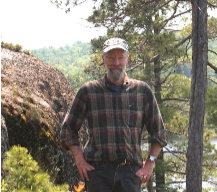Forces driving long-term changes in temperate forest plant communities

Don Waller
Dept. of Botany, Univ. of Wisconsin – Madison, USA
dmwaller@wisc.edu
Various stresses alter the composition, structure, and function of many ecosystems. Temperate forests are often assumed to resist these stresses because they are adapted to disturbances and support low plant diversity. Long-term data, however, are scarce and forests tend to change slowly, making it difficult to test this assumption. Our resurveys of hundreds of sites initially surveyed by John Curtis and his students in the 1950s reveal several patterns of long-term ecological change across Wisconsin's forests. Species differ in how they have shifted in distribution and abundance over the past 50-60 years. Both alpha and beta diversity have declined across most sites, but sites differ in the nature and extent of change. We use these differences among species and sites to infer the drivers of ecological change in these forests. Climate change, ecological succession, habitat fragmentation, invasions of non-native species, overabundant deer, and atmospheric N deposition all appear to be affecting these forests, but their relative strength varies among species, sites and landscapes. We are now assessing the roles of plant functional traits and phylogenetic relatedness in the forces driving community assembly and disassembly.
Recent publications:
Amatangelo, KL , Johnson, SE , Rogers, DA, Waller, DM (2014) Trait-environment relationships remain strong despite 50 years of trait compositional change in temperate forests. Ecology 95: 1780-1791.
Li, DJ, Waller, DM (2015) Drivers of observed biotic homogenization in pine barrens of central Wisconsin. Ecology 96: 1030-1041.
Contact: Ophélie Ronce ophelie.ronce@univ-montp2.fr
Contact du Comité SEEM: seem@services.cnrs.fr. Contact du Labex CEMEB: gestion.cemeb@univ-montp2.fr, www.labex-cemeb.org.


